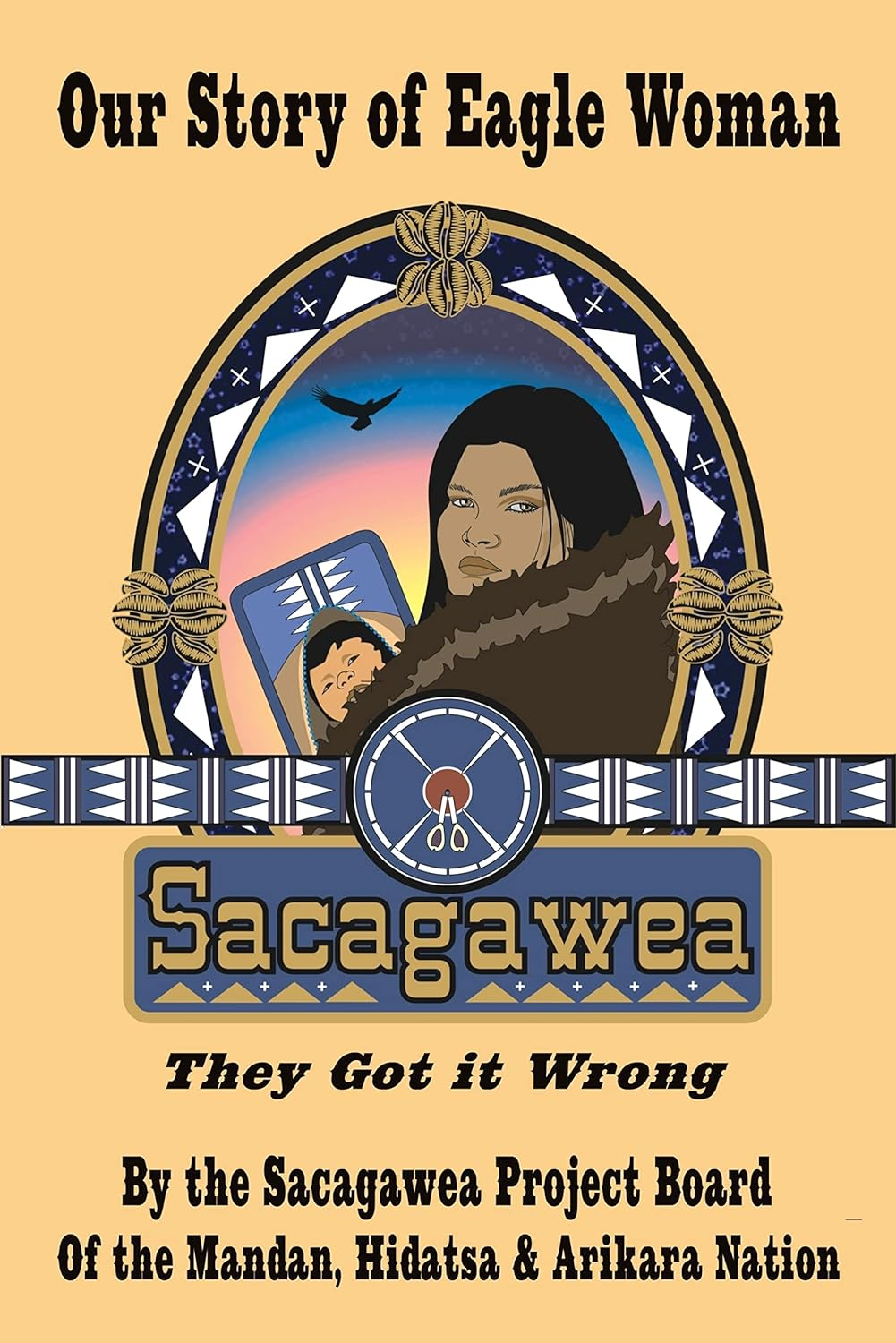But the death date matters. The standard 1812 date describes a short life with a sad ending. A new date proposed by Sacagawea’s descendants and other interested members of the Hidatsa tribe suggests a longer life of broader drama and significance—fifty-seven years longer. The Hidatsa argument arrives in Our Story of Eagle Woman: Sacagawea: They Got It Wrong, by the Sacagawea Project Board of the Mandan, Hidatsa, and Arikara Nation. No single author is named or thanked within. The book is a tribal effort led by five Project Board members who are all relatives of Sacagawea: Calvin Grinnell, Bernie Fox, Gerard Baker, Carol Newman, and Wanda Fox Sheppard (who died after its publication). The research and writing of the book was organized by Sheppard’s brother and his wife, Dennis and Sandra Fox. Additional research was contributed by Professor Michael Welsh of the history department at the University of Northern Colorado. These eight and other volunteers share a belief common among Native Americans that they have something important to add to their history.
Our Story of Eagle Woman is the clearest and best example of a book written in this spirit that I have seen. Its claims are specific, broad, hard to resolve, and above all numerous: that Sacagawea had a Hidatsa name because she was Hidatsa; that except for travels with Charbonneau, she lived the whole of her life among the Hidatsa on the Upper Missouri; that late in life she had three additional children, all daughters; that her brother, Cherry Necklace, was a notable leader and religious figure; that after 1845 she lived with her brother in a traditional earthen lodge in Like-a-Fishhook village, near the trading post known as Fort Berthold; that her life there was intimately connected to the Hidatsa in all the village ways of the time; that she lived into her eighties; and that she was fatally wounded in 1869 by Sioux Indians—very likely Hunkpapa belonging to a war faction led by Sitting Bull—while traveling with a group on its way to a trading post upriver near Fort Buford.
Every detail of this expansion of the standard story is certain to be debated to exhaustion, but here, too, one detail in particular should be kept in mind from the outset: Our Story of Eagle Woman, drawing on tribal records and the family traditions of Hidatsa elders, asserts that Sacagawea’s father, Smoked Lodge, was Hidatsa, but that her mother was a Crow named Otter Woman or Comes Out of the Water. The Crow and Hidatsa were closely related tribes, but not the same. Having a Hidatsa father and a Crow mother opens a question of what Sacagawea was, exactly.
